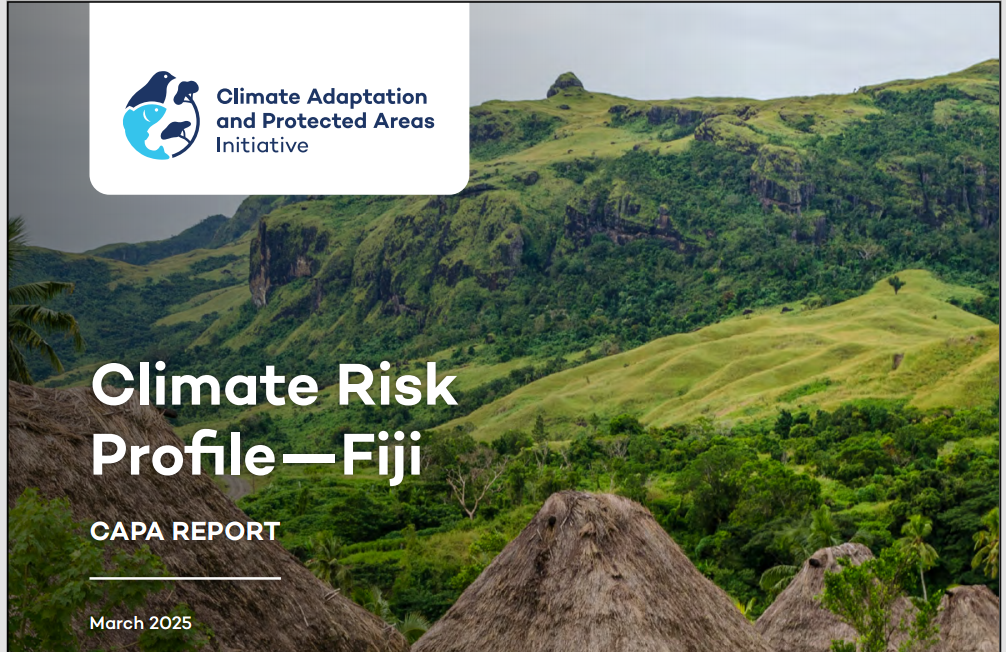A report released recently examines the role women and indigenous people play in Climate Adaptation and Protected Areas (CAPA) Initiatives in designing and implementing nature-based solutions for adaptation in and around protected areas where they stay. The report has been prepared by the International Institute for Sustainable Development, Wildlife Conservation Society, and World Wildlife Fund for Nature.
It has found in Fiji, structural gender inequality is a driver of women’s high degree of vulnerability to the impacts of climate change. The report adds in addition to coping with disasters and responding to climate change, many women in Fiji face additional challenges, such as access to resources, income, education, and health care.
The report state shifts in coastal marine fisheries and diminished availability of fish stocks, compounded by climate change, are affecting women, men, and underrepresented groups in different ways.
Women heavily depend on fisheries for their livelihoods and their families’ food security, as they are significantly involved in subsistence fishing and tend to fish in shallow-water reefs, lagoons, or estuaries for small fish and seafood for subsistence or income generation.
Climate change impacts on ecosystems in Fiji
The report found protected areas are a critical approach to conserve biodiversity, maintain ecosystem functionality and the provision of the services they provide to people and communities, in the form of livelihoods, food security, health, spiritual and cultural identity.
The authors of the report add in addition, well connected ecosystems such as forests, freshwater and marine protected areas provide habitat for many species and refuge from climate and natural disasters.
“If protected areas are well-designed and managed and function as a connected network, they can greatly improve the functionality and health of ecosystems, provide economic and social benefits to communities and halt biodiversity loss,” states the report.
Many protected areas in Fiji are designated by “indigenous communities with customary land-sea rights through traditional management systems such as tabus, adds the report. The CAPA Initiative is working with local communities that live within and around protected areas to design and implement adaptation that respond to climate change and biodiversity impacts in Fiji.
For this report, a comprehensive climate risk assessment was undertaken in 20 communities across six districts in terrestrial and marine sites such as Kubulau, Nakorotubu, Dawasamu, Namalata, Bua, and Bureta, Nakorotubu, Bua and Bureta are home to locally managed marine areas within the Vatu-i-Ra Seascape, and activities focus on improving regulation and monitoring of customary fishing grounds to improve coral reef protection and reduce fishing pressure.
Kubulau district hosts the Kubulau Forest Conservation Area, which encompasses one of the last native rainforests on Fiji’s second largest island, Vanua Levu.
At least 98 per cent of the Kubulau Forest Conservation Area is primary undisturbed habitat that the Ministry of Forests has described as part of the few remaining untouched forests in Fiji. Activities in the terrestrial areas focus on integrated watershed management, landscape restoration, biodiversity conservation, and sustainable agricultural practices.
Climate change impacts on women and marginalized groups
The report states the majority of women are not involved in decision making regarding natural resources, and while their opinions or concerns are brought up during village council meetings, they are rarely acknowledged. It adds due to their participation in vulnerable sectors (agriculture, fisheries), women are particularly susceptible to climate shocks and are at an increased risk of impoverishment.
“Women do most of the (typically unpaid) inshore work in subsistence fisheries due to declining fish population and size, women tend to travel longer distances along the coast to fish, spending extended periods away from home,” states the report.
The findings are that frequent droughts are impacting water availability, forcing women to walk to nearby streams, creeks, and springs to collect drinking water and wash clothes. Also salt inundation around village boundaries forces women to go further inland to plant local vegetables for sale or have their vegetable plantations for home consumption.
“Water contamination poses significant health risks for women, who rely on clean water for daily household chores. Disasters also impact women disproportionately; after tropical cyclone Winston, gender-based violence escalated and women experienced more impacts from the economic downturn than men during the recovery and reconstruction phases.”
Recommendations for the future
The report states not everyone can participate equally in the design and implementation of climate adaptation strategies and initiatives. For example, women and youth at the community level are significantly underrepresented and often lack confidence in their ability to influence climate and biodiversity-related planning and decision making due to limited knowledge on conservation and environmental issues.
“To ensure that climate adaptation initiatives in Fiji are effective, inclusive, and sustainable, deliberate effort must be made to adopt a gender-responsive and socially inclusive approach to their design and implementation,” states the report.
The report recommends the to conduct of community awareness and training sessions to ensure meaningful participation and representation of youth, men, and women, adding that community-led patrols by fish wardens that include women and youth to safeguard conservation areas and ensure compliance with fisheries rules. There has to be capacity building focused on livelihood options (e.g., backyard gardening and food processing alternatives), with a focus on empowering women, the report says.

